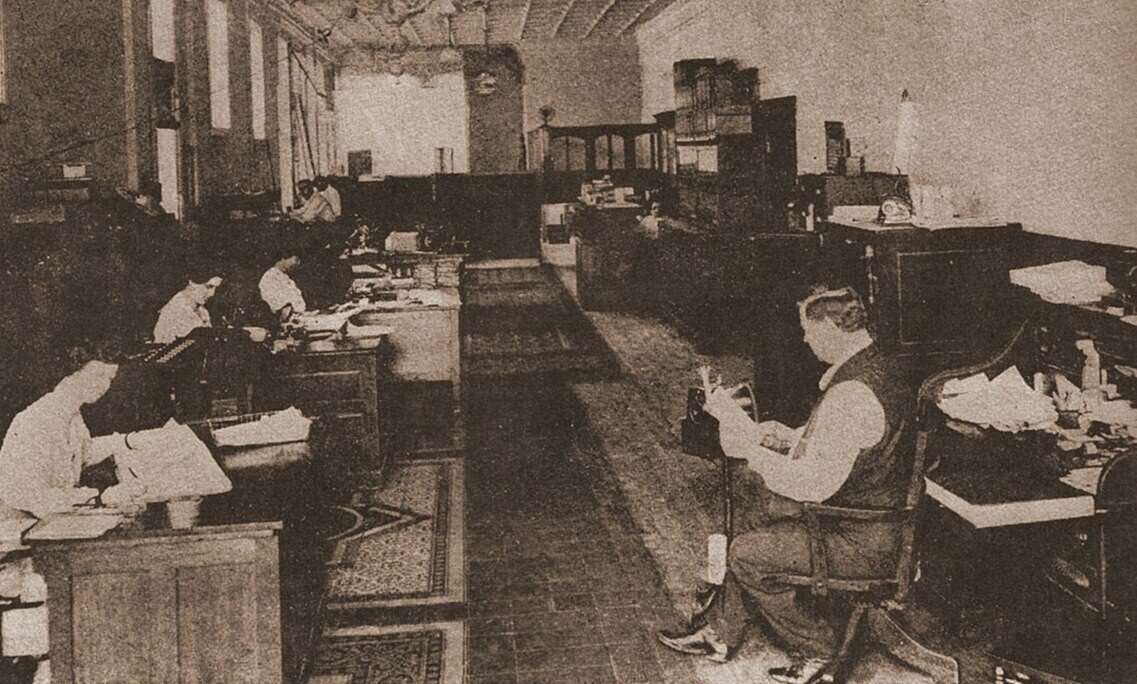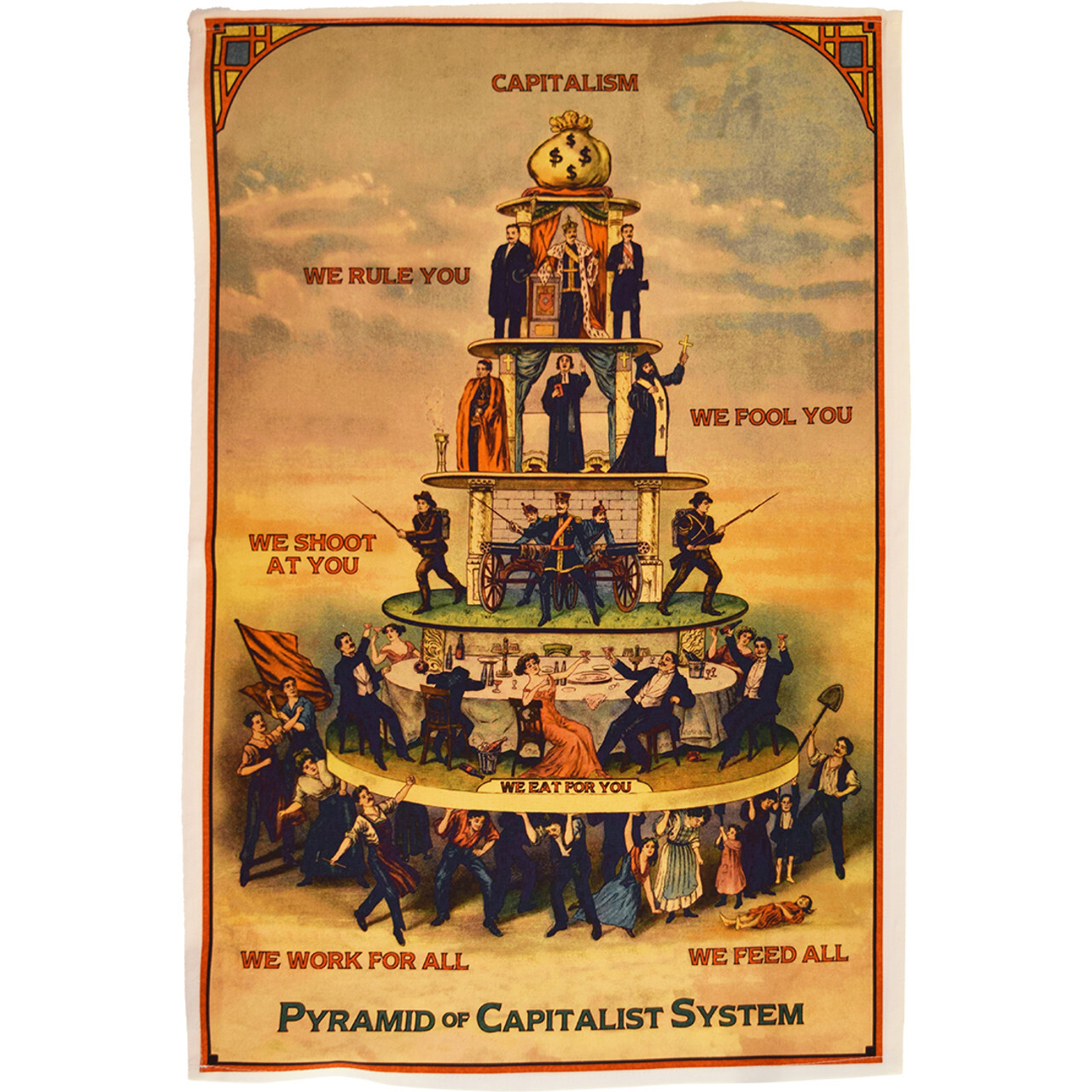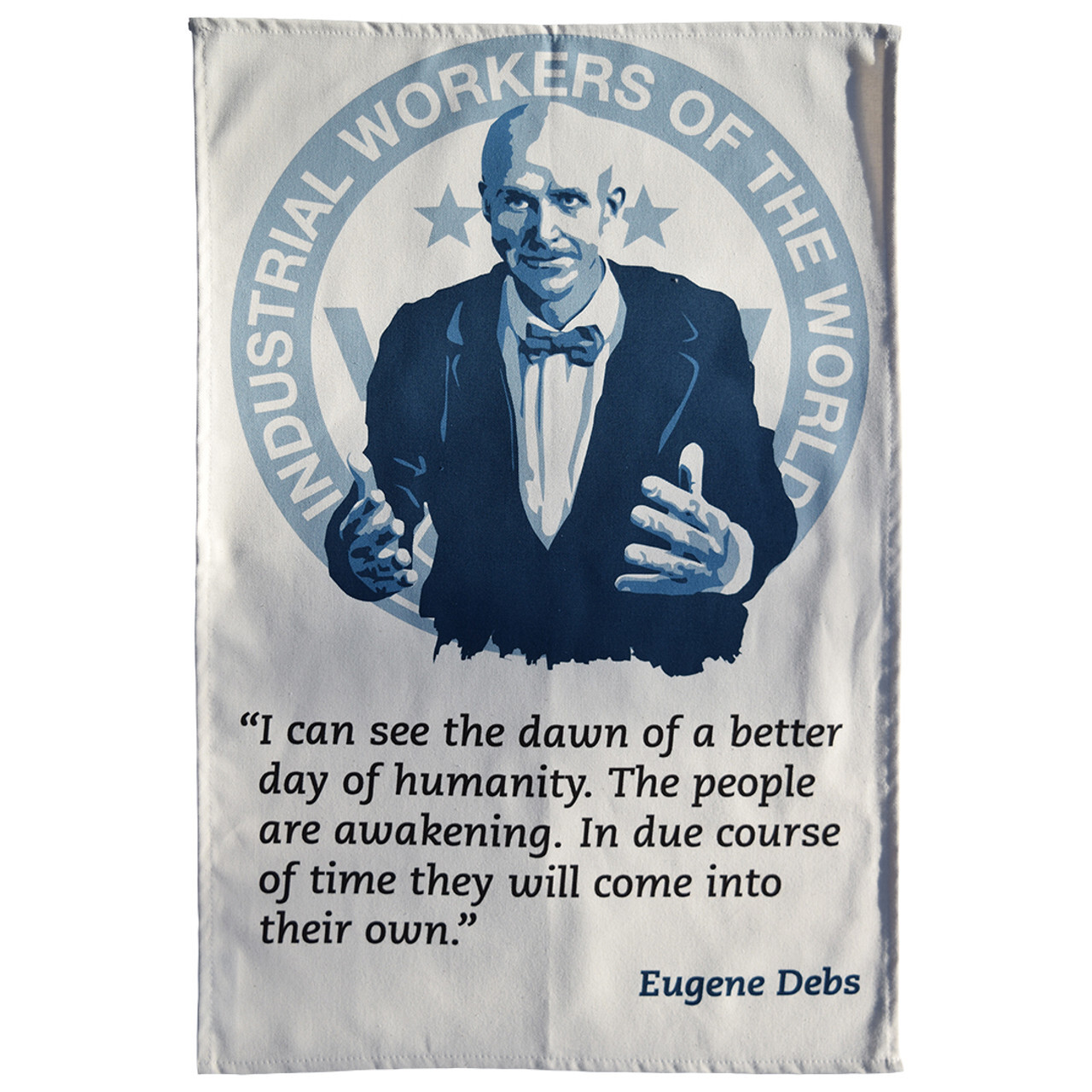The IWW: A Labor Union Like No Other
Posted by Pete on 26th Jun 2025
120 years ago, a different kind of trade union sought to remake the US

The IWW Headquarters in Chicago in 1917
The Industrial Workers of the World (IWW) was founded on this day in 1905.
It was a labour union like no other.
Although its centre was in North America, the ‘Wobblies’ - IWW members - were all over the world.
The IWW was also ready to welcome marginalised workers – women, immigrants, ethnic minorities - whom more moderate unions excluded.
And whereas other labour organisers’ vision was limited to reforming capitalism, the Wobblies wanted to overthrow it.
The Industrial Workers of the World was founded in Chicago, a city known for its radicalism and inspiration for May Day in the Haymarket Affair
See the Anarchists of Chicago tea towel
The IWW was founded in Chicago on 27 June 1905.
It was a radical, working-class town for radical, working-class deeds.
The founders of the IWW included the best American labour organisers of the time: Big Bill Haywood, Mary Mother Jones, Eugene Debs.
The original Wobblies also counted foreign-born and migrant workers, like the Irish socialist, James Connolly.
It was a sign of things to come, as the IWW recognised the international scope of the working class and its struggle against capitalism.
Outside the U.S., the Wobblies established a presence in Australia, Canada, and other English-speaking countries, too.
In the North American context, the IWW was formed as a radical alternative to the dreary and conservative establishment of the U.S. labour movement, embodied by the American Federation of Labor (AFL).
Rather than just make capitalism marginally less intolerable for a fraction of white, native-born workers, the IWW wanted to create an ‘industrial democracy’ of, for, and by all workers.
"It is the historic mission of the working class to do away with capitalism... By organizing industrially we are forming the structure of the new society within the shell of the old."
And the Wobblies’ progressive message of anti-capitalist class struggle cut through.
The IWW forged bases of working-class support in all sorts of places and among all kinds of worker: Mexican-American copper miners in Arizona, Philadelphia longshoremen, lumberjacks in western Canada.
Our new Pyramid of Capitalism tea towel, inspired by a 1911 cartoon from the Industrial Worker, a publication of the IWW
See the Pyramid of Capitalism tea towel
But labour organising in the early twentieth century wasn’t risk-free, especially in North America.
U.S. labour relations were violent at the time.
Bosses, supported by the state, used armed force against organised labour and the workers fought back, like in the steel town of Homestead, Pennsylvania, in 1892.
So, the IWW was formed in a context where ‘class war’ wasn’t just an abstract idea, it was a daily reality.
Indeed, the life of a Wobbly could be fatal.
Anna LoPizzo, an Italian immigrant textile worker, was murdered by a state militiaman during the IWW’s strike in Lawrence, Massachusetts, in 1912.
And the legendary Wobbly folksinger, Joe Hill, was killed by the state on false charges in 1915.
The government used U.S. entry into WW1 as cover to intensify the class war against the IWW.
The Wobblies, like Eugene Debs’ Socialist Party, were passionately antiwar. Their slogan was:
"No War but the Class War"
Eugene Debs of the IWW stood for President five times as the Socialist Party candidate
Eugene Debs IWW tea towel (US site only)
In brazen violation of free expression, the government went after the Wobblies just for speaking against the war.
Like Debs, countless IWW members were imprisoned.
Similar repression happened to antiwar Wobblies in Australia and Canada, too, but not before the IWW had played a vital role in convincing Australians to vote against conscription in 1916.
In the U.S., wartime persecution of the Wobblies segued seamlessly into the First Red Scare.
The right-wing anti-IWW violence was full of racism, too.
Not only did the hostility to the Wobblies focus on how so many of them were immigrants, it also combined with older forms of racism in the U.S.
Many of the perpetrators of the Tulsa Massacre of 1921, an anti-Black pogrom in Oklahoma, had also been involved in violence against the IWW.
The Wobblies weren’t destroyed by the Red Scare but they never fully recovered.
Nevertheless, the IWW’s foundation 120 years ago pointed the way to a new kind of politics: more inclusive, more ambitious, and fearless in its commitment to the working class.



